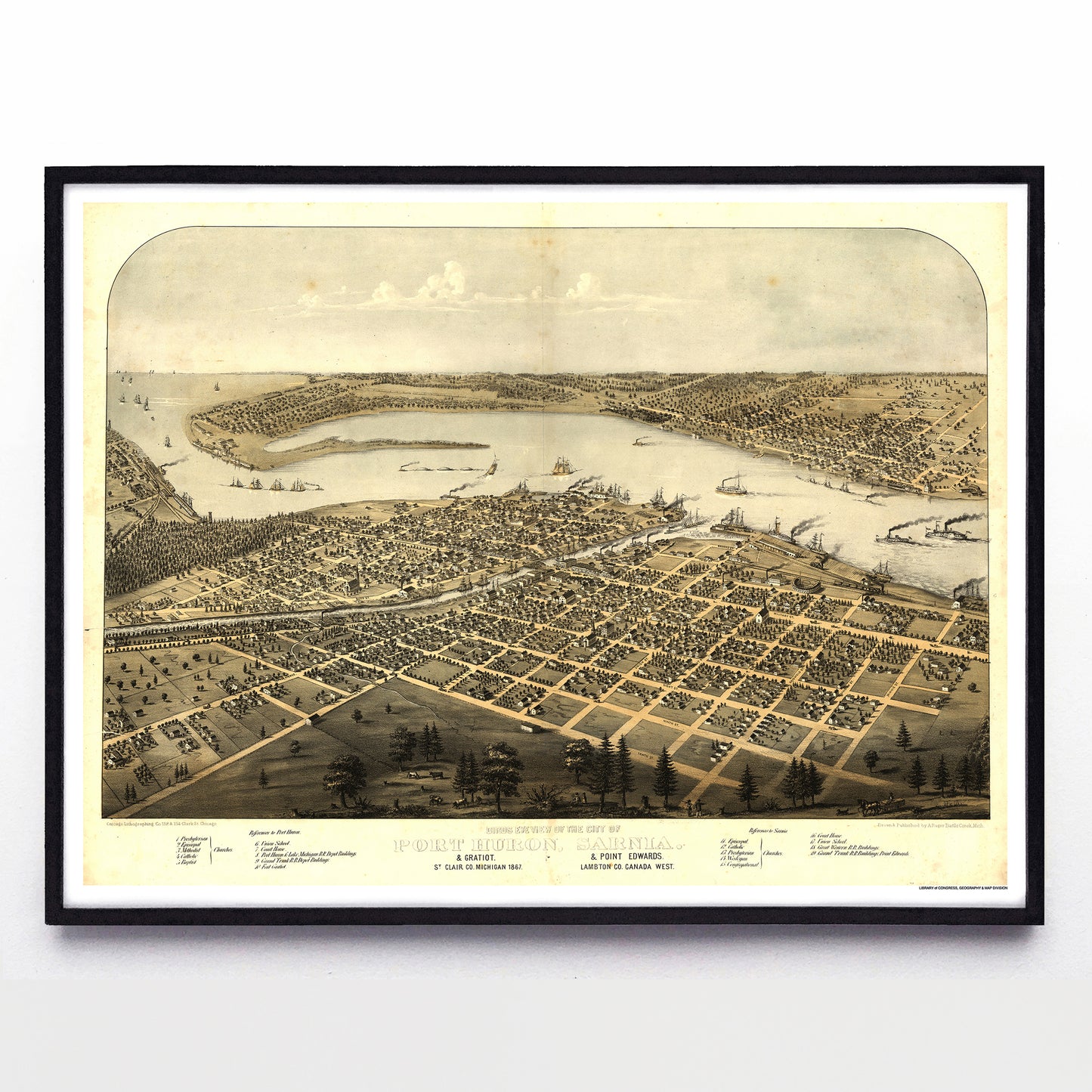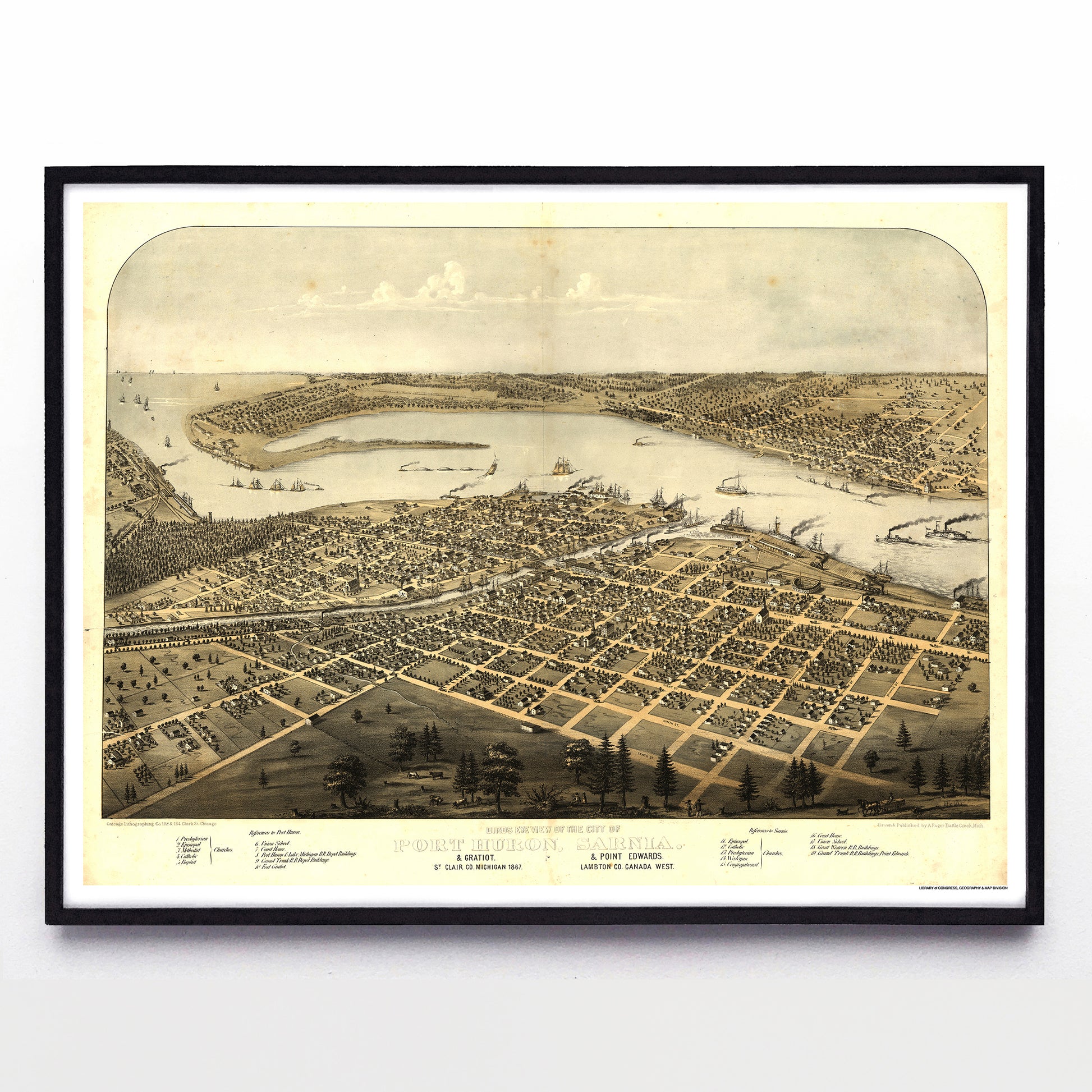"Birds Eye View of the City of ... Sarnia" print by Albert Ruger (1867)
"Birds Eye View of the City of ... Sarnia" print by Albert Ruger (1867)
Couldn't load pickup availability
On July 1st 1867 the British North America Act united the United Canadas, Nova Scotia, and New Brunswick into a dominion of 3.5 million people and 600,000 square kilometres. Some Canadians celebrated, others mourned, and the Prussian-born American artist responsible for the above image probably wasn’t even in Canada at the time.
Albert Ruger’s schedule was that of a landscape artist during the second half of the 19th century bird’s eye panoramic art print boom; he’d be stopping (and sketching) at 30 different cities in the American midwest that year. Artists like him and T. M. Fowler, Oakley Bailey, and J. J. Ruger were prodigious, but were also part of an army that travelled North America between 1850 and 1920 making mass produced, city-based, art in line with new technologies like the hot air balloon and camera.
An artist like Ruger would have a standard creative process that kept commerce in mind. First, his agent would go to a city and solicit orders for a to-be-completed image, often following a route meant to maximize sales and minimize travel costs. If enough orders were placed, the artist would visit and spend a week or two sketching that city. Then the results would be sent to a printer (in this case, the Chicago Lithographic Co.), and that printer would create anywhere from 50-1000 copies and deliver them to customers.
Typically they finished prints were quite large—this view is 50x75 cm—though inexpensive compared to paintings or statues, making them perfect for the walls of government offices, business board-rooms, lobbies, shops, libraries, and homes of well-to-do civic boosters coast to coast to coast.
A reproduction available at 16x12" or 24x18" on Epson Enhanced Matte 192 gsm paper printed with Epson UltraChrome XD2 archival ink. Sold in an open edition, unframed. Based on this original public domain image held by the Library of Congress.


